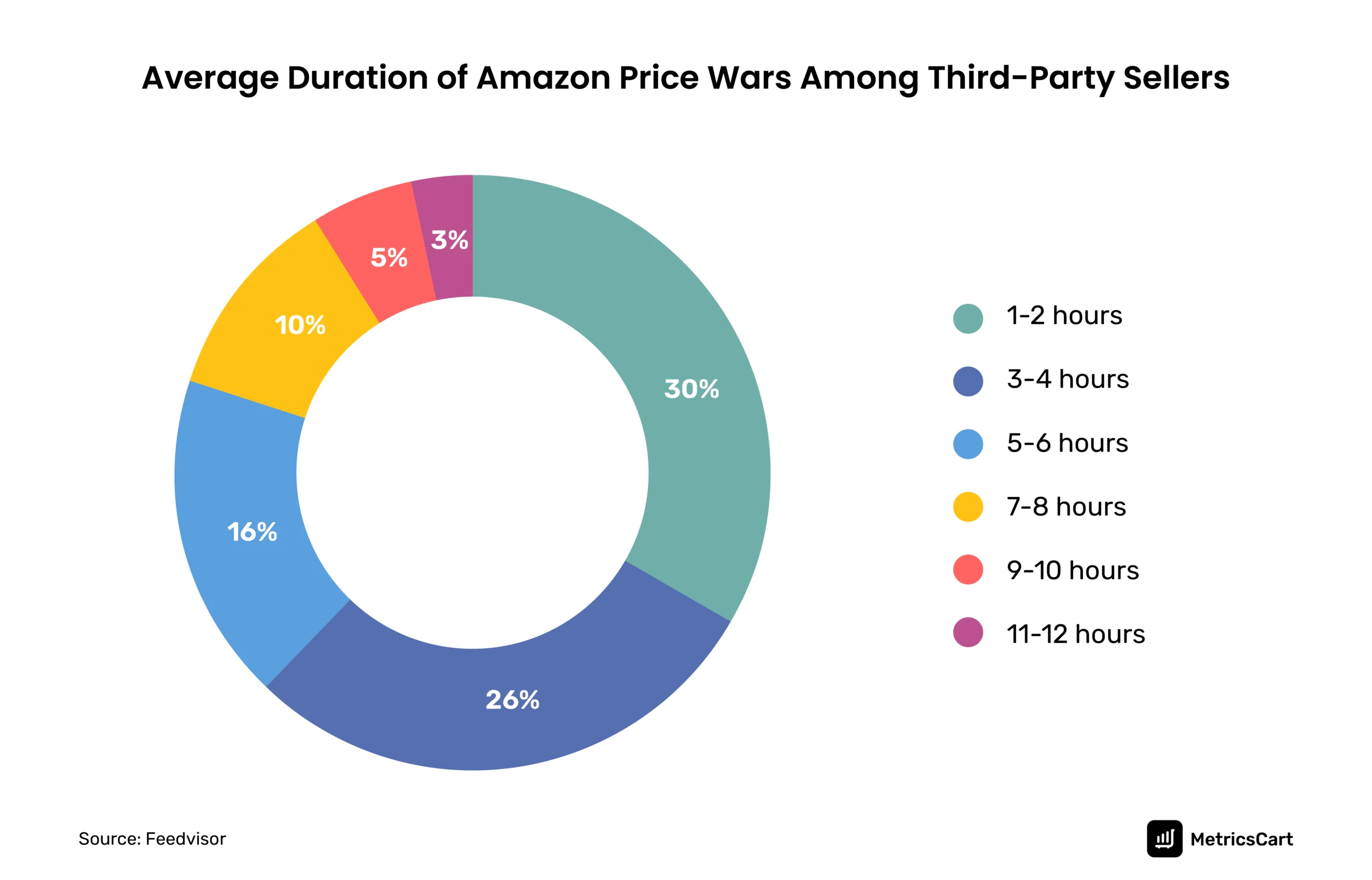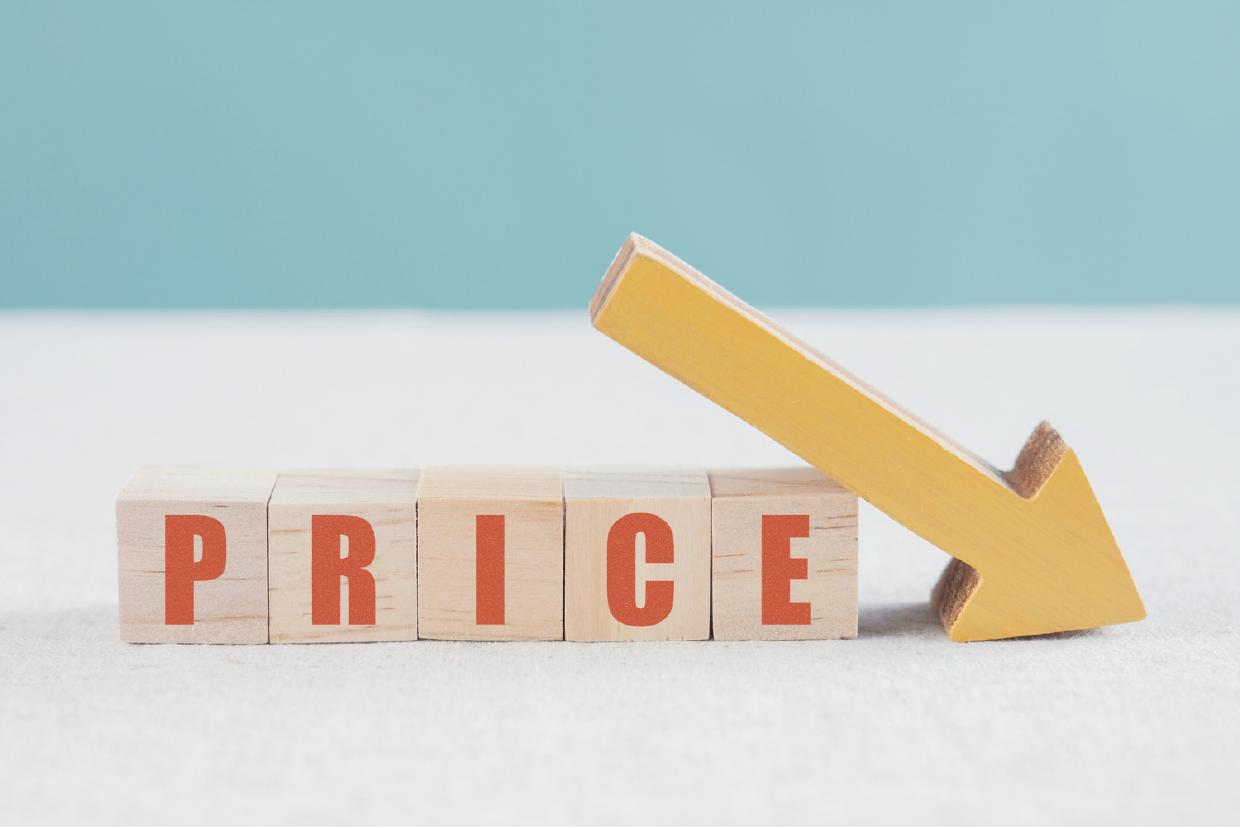The concept of price war in e-commerce is more than discounts and cheaper products. It is a strategic initiative brands use to eliminate competition online and secure a larger market share.
However, e-commerce price wars can be highly detrimental to manufacturers, marketplace sellers, and even customers.
What is Price Wars?
Price wars refer to situations in which businesses continuously reduce the prices of their products to generate more revenue and gain a competitive advantage. It begins when one brand lowers the product price, prompting other competitors to do the same to avoid losing customers.
Price war in e-commerce is a common challenge for online sellers, especially in competitive markets where customers can easily compare prices and switch to cheaper alternatives.
Examples of E-Commerce Price War
E-commerce price wars can happen on multiple levels. They can be between two or more e-commerce sites or among online sellers within a marketplace. Several brands have been involved in e-commerce price wars from time to time over the years.
Walmart vs. Amazon
Walmart and Amazon often engage in price wars, especially during major shopping events like Black Friday and Cyber Monday. For instance, in 2020, Amazon’s “Holiday Dash” event was a strategic move to get a head start on Black Friday sales. As a result, Walmart had to respond rapidly with its irresistible offers. Instead of the one sale that traditionally began on Thanksgiving, Walmart introduced three events online and in stores.
Both offered huge discounts across multiple categories, such as toys, fashion, electronics, home, kitchen, and beauty, from both small businesses and top brands, leading to a price war.
Amazon Price Wars
Price wars between two or more Amazon third-party (3P) sellers are common in the e-commerce industry. Amazon’s predefined repricing rules usually trigger these e-commerce price wars. In addition, sellers repeatedly reduce the prices to win the Amazon Buy Box or Featured Offer, increasing sales.
A Feedvisor study titled Amazon Price Wars reveals some interesting insights:
- Price wars can happen at any time. It is not influenced by seasonality, day, or hour.
- It typically involves two competing digital sellers. Price wars with more than three online sellers are rare.
- Most price wars occur over a very short period. The majority of the price wars lasted no more than six hours.

Apart from e-commerce, price wars are also common in other industries like airlines, travel, etc. One such example is given below:
Expedia vs. Booking.com
Expedia and Booking.com are popular travel booking sites that offer services like booking flights, hotels, car rentals, and vacation packages. They often engage in price wars by providing discounts and reducing booking prices to attract more customers. In addition, they also give other promotions to build a loyal customer base.
For example, Expedia offers reward points, which enable customers to gain perks like room upgrades and member-only deals at a reduced cost. Meanwhile, Booking.com collaborates with hotel chains like Marriott and has a Genius program where customers can avail discounts during hotel stays.
Causes of Price Wars in E-Commerce
Numerous factors can trigger a pricing war in the e-commerce sector. Enlisted below are some of the causes:
- Brands in highly competitive industries often engage in e-commerce price wars to eliminate competition and increase or maintain their market share.
- When products are similar and interchangeable, price becomes a key differentiator for consumers. In addition, customers can easily compare the product price on e-commerce platforms, thereby triggering price wars.
- Established players might lower prices to create a cost barrier, making it less attractive for new entrants to compete in the market.
- Overstocked retailers reduce prices to clear inventory, especially for seasonal products or items nearing the end of their product lifecycle.
Effects of E-Commerce Price Wars
Price wars can be a double-edged sword for businesses. Below are both positive and negative effects of price wars on brands and retailers.
- While they can attract new customers and increase sales volume, they can also affect profit margins for a specific period.
- Brands that successfully navigate price wars can gain a larger market share by attracting customers from competitors.
- It can help retailers clear out excess inventory, allowing them to develop and release new products.
- However, the e-commerce price war can be challenging for small businesses with limited resources. They may struggle to cover their operational costs and sustain their operations in the long run. Thus, they might have to leave the industry or be acquired by larger companies.
- When companies engage in price wars, consumers may perceive their products or services as being of lower quality, damaging the brand value and reputation.
- Predatory price wars where large brands reduce prices aggressively can lead to potential investigations into anti-competitive or anti-trust behavior.
- Consumers may become accustomed to lower prices during a price war and develop price-sensitive habits. As a result, it becomes difficult for companies to return to their initial pricing levels.
Is Price Wars Good for Consumers?
Most e-commerce price wars are short-term. Since customers can buy products at a lesser cost, they have immediate cost savings and increased affordability. They might also get additional products and services as part of the deal.
Conversely, if a large firm aggressively cuts prices to drive competitors out of business, consumers will ultimately have fewer choices. This could also hamper the quality of the products.
How to Avoid Price Wars?
Understanding how to avoid price wars is crucial for maintaining healthy margins and preserving brand integrity. Follow the steps given below to form a suitable price war strategy for businesses.

Conduct Competitor Price Monitoring Regularly
Regular competitor price monitoring is a proactive strategy to help online sellers maintain their market position and profitability. It involves tracking competitors’:;
- Product offerings
- Pricing patterns
- Seasonal discounts
- Promotions
- Market share
It will also help understand the aspects that make competitors change their pricing, such as supply chain costs, new product introductions, or shifts in consumer demand. Moreover, it enables brands to analyze the short-term and long-term effects of pricing decisions and avoid price wars unless there is a clear competitive advantage or a strategic objective.
Offer Value-Added Services
Rather than simply reducing prices during a price war in e-commerce, businesses can differentiate their product and offer value-added services to retain their customer base.
For this, they can:
- Launch better features, expand into new markets, and partner with other businesses to improve the products and services
- They can offer personalized services, reward points, member-only deals, and superior-quality products at premium prices to attract less price-sensitive customers.
- Segment the market and target different customer groups with different price points and value propositions.
Adopt a Suitable Pricing Strategy
Businesses must implement an appropriate pricing strategy based on their market position, brand reputation, etc., to navigate the price war in e-commerce. Most digital sellers use a dynamic pricing strategy by leveraging real-time data to adjust prices based on demand, supply, competitor pricing, and various market conditions.
Other e-commerce pricing strategies include:
- Value-based pricing
- Bundle pricing
- Psychological pricing
- Competitive pricing
- Economy pricing
Leverage Minimum Advertised Price (MAP) Policies
Minimum Advertised Price (MAP) policies establish the minimum price at which retailers can advertise products by a manufacturer. This helps to maintain consistent pricing across third-party (3p) sellers and prevent predatory price wars. Thus, it promotes healthy competition in the market and maintains profit margins.
How Does MetricsCart Help Brands Win a Price War in E-Commerce?
A price war in the e-commerce sector can start unexpectedly, demanding retailers to adjust the pricing of numerous products constantly.
MetricsCart provides a cutting-edge price-monitoring solution that will help you stay abreast of pricing changes and adopt suitable measures to stay ahead of the competition. You can:
- Know competitors’ pricing patterns and promotional offers in real-time
- Understand daily promotional data detailing types, descriptions, prices, and discount amounts.
- Get daily Buy Box analytics tailored for Amazon, indicating products that lost the Buy Box and to whom.
- Gain visibility into price competition analytics, empowering retailers to discern which competitors initiated pricing wars in e-commerce.
Stay ahead of the game and maximize your profits with MetricsCart. Contact us now and find how we can help you!





